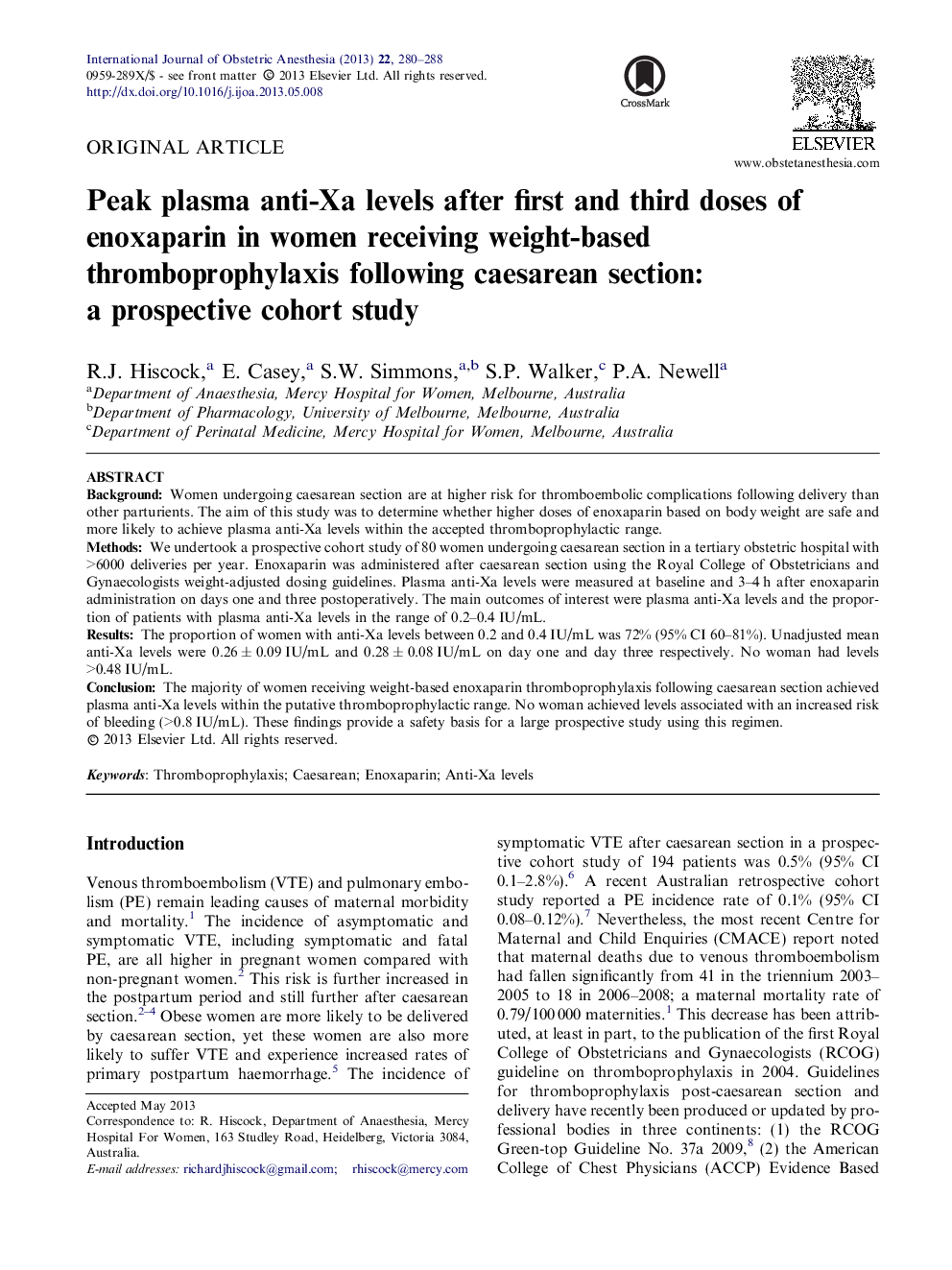| Article ID | Journal | Published Year | Pages | File Type |
|---|---|---|---|---|
| 2757804 | International Journal of Obstetric Anesthesia | 2013 | 9 Pages |
BackgroundWomen undergoing caesarean section are at higher risk for thromboembolic complications following delivery than other parturients. The aim of this study was to determine whether higher doses of enoxaparin based on body weight are safe and more likely to achieve plasma anti-Xa levels within the accepted thromboprophylactic range.MethodsWe undertook a prospective cohort study of 80 women undergoing caesarean section in a tertiary obstetric hospital with >6000 deliveries per year. Enoxaparin was administered after caesarean section using the Royal College of Obstetricians and Gynaecologists weight-adjusted dosing guidelines. Plasma anti-Xa levels were measured at baseline and 3–4 h after enoxaparin administration on days one and three postoperatively. The main outcomes of interest were plasma anti-Xa levels and the proportion of patients with plasma anti-Xa levels in the range of 0.2–0.4 IU/mL.ResultsThe proportion of women with anti-Xa levels between 0.2 and 0.4 IU/mL was 72% (95% CI 60–81%). Unadjusted mean anti-Xa levels were 0.26 ± 0.09 IU/mL and 0.28 ± 0.08 IU/mL on day one and day three respectively. No woman had levels >0.48 IU/mL.ConclusionThe majority of women receiving weight-based enoxaparin thromboprophylaxis following caesarean section achieved plasma anti-Xa levels within the putative thromboprophylactic range. No woman achieved levels associated with an increased risk of bleeding (>0.8 IU/mL). These findings provide a safety basis for a large prospective study using this regimen.
